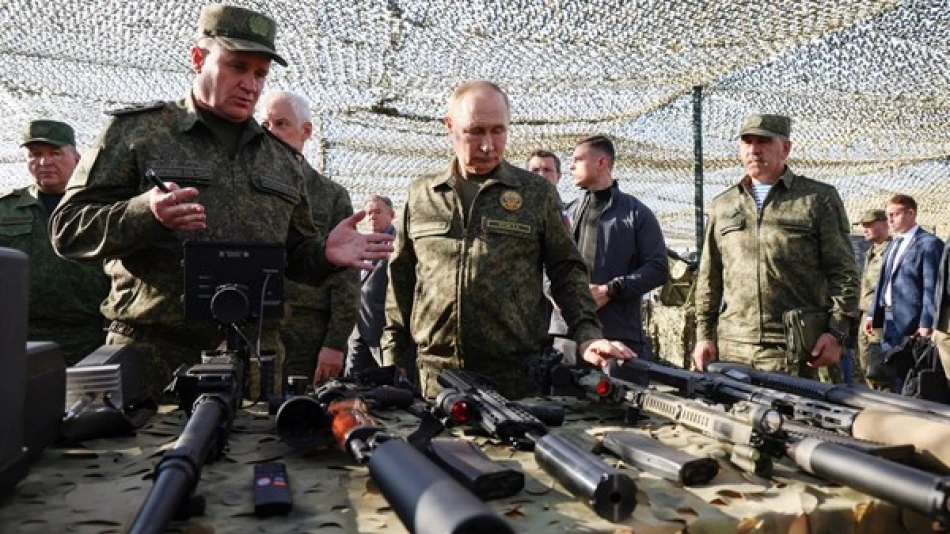
Putin Unveils Details of 'Zapad' Military Exercises
Russia Flexes Military Muscle with 100,000-Strong "Zapad 2025" War Games
Russia concluded its largest military exercise of the year on Tuesday, with President Vladimir Putin announcing that 100,000 troops participated in the joint "Zapad 2025" maneuvers with Belarus. The strategic drills, which featured hypersonic missile tests and intensive drone warfare training, signal Moscow's continued military modernization amid ongoing tensions with NATO while drawing international observers from both allied and Western nations.
Massive Scale and Modern Warfare Focus
The five-day exercise, which began Friday and concluded Tuesday, deployed forces across 41 training grounds and utilized approximately 10,000 weapons systems and military equipment. Putin, appearing in military uniform at the Mulino training ground in Russia's Nizhny Novgorod region alongside Defense Minister Andrei Belousov, emphasized that the drills aimed to establish "all necessary elements for absolute defense of sovereignty and territorial integrity."
What sets Zapad 2025 apart from previous iterations is its heavy emphasis on contemporary warfare techniques. The Russian Defense Ministry highlighted the "intensive use of drones" and "electronic warfare means," incorporating lessons learned from recent conflicts—a clear reference to Russia's ongoing military operations in Ukraine.
Hypersonic Weapons Display
The exercises featured a live test of Russia's Zircon hypersonic cruise missile, launched from a Russian frigate. This weapon belongs to Russia's new generation of hypersonic systems developed over recent years, capable of traveling at speeds exceeding Mach 5 and designed to evade traditional missile defense systems. The public demonstration serves as both a technological showcase and strategic deterrent.
Geopolitical Theater and International Observers
Despite escalating tensions between Russia and the West, the exercises attracted observers from approximately 20 countries, including NATO members United States, Hungary, and Turkey. This diplomatic aspect of military exercises reflects established international protocols for transparency in major military activities, even during periods of heightened geopolitical strain.
Military units from Bangladesh, India, Burkina Faso, Congo, and Mali participated in varying capacities, demonstrating Russia's efforts to maintain and expand military partnerships beyond its traditional sphere of influence, particularly in Africa and Asia.
Strategic Messaging and Military Readiness
The Zapad exercises, conducted every four years, have historically served as both genuine military training and strategic messaging tools. This year's iteration trained forces to "repel large-scale military aggression" across "three fronts and in the Arctic region," reflecting Russia's perception of multi-directional security challenges.
The Arctic component is particularly significant given the region's growing strategic importance due to climate change opening new shipping routes and resource extraction opportunities. Russia has been steadily militarizing its Arctic territories, viewing the region as crucial to its national security and economic interests.
Comparison to Previous Cycles
The 100,000-troop figure represents a substantial commitment, comparable to the scale of major NATO exercises like Defender Europe. However, unlike Western military exercises that often emphasize interoperability among multiple allied nations, Zapad 2025 primarily showcased Russian-Belarusian integration with limited international participation.
The timing and scale of these exercises underscore Russia's determination to project military strength while testing new capabilities in an increasingly complex security environment. For military analysts and policymakers worldwide, Zapad 2025 provides insights into Russia's evolving military doctrine and technological capabilities, particularly in drone warfare and hypersonic weapons systems that are reshaping modern conflict dynamics.
Most Viewed News

 Layla Al Mansoori
Layla Al Mansoori






